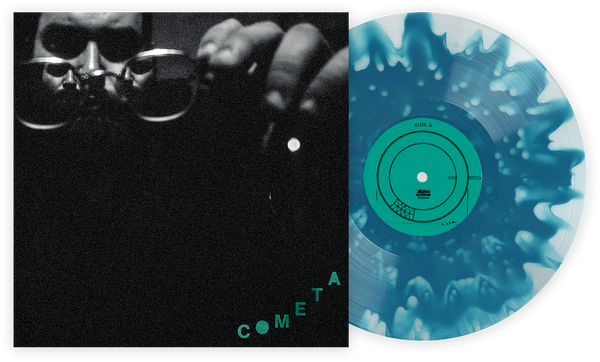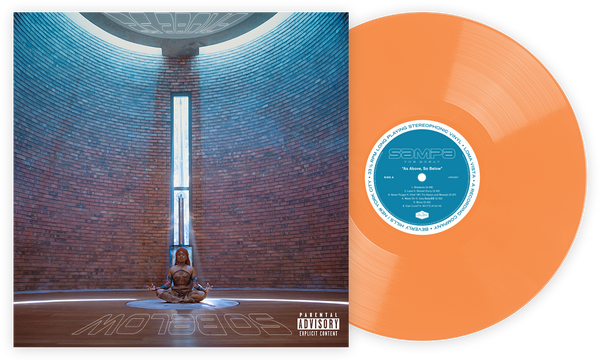If you take a look at a given category of manufactured products—be it ballpoint pens, ovens or half a million other devices, it is generally possible to find a level of consensus employed in their design that goes beyond that demanded by consumer laws or simple budget constraints. This isn’t too surprising—I don’t know about you but when looking for a pen, I want a device that I can easily hold that deploys ink out of one end rather than, say, the entire length of the pen—but it does suggest that in many categories, the notion of design is pretty settled.
Many of these implied consensuses apply to record player design too. This is why your turntable, regardless of its age and origin, is likely to place the record on a platter, use an arm to hold the cartridge and be rotated by electricity. After this though, record players are intriguingly diverse devices which frequently reject any sense of implied consensus. We’ve covered many of these differences in pieces before, but there is one that is so fundamental to the nature of how record players work that it can escape your attention until you sit back and take notice of the turntable as a whole. I am referring to the amount a turntable weighs and where that weight is deployed.
What do I mean by this? There are in fact separate calculations for the mass of a record player. The first is how much it weighs, full stop. The second is the amount of that mass which is concentrated in the platter. Just to give some idea of the variation involved in this, for almost exactly the same amount of money, you can purchase a Pro-Ject RPM 10 or a Funk Firm Vector V. Both spin records at 33 or 45 rpm via belt drive and both are highly regarded devices, but at a whisker under 50 pounds (minus the enormous supplied base), the Pro-Ject weighs over five times as much as the Funk. This is not the sort of variation that can be explained away to accidental decision-making so what is going on?
These models are extreme ends of an argument that has been ongoing for many years. The argument centers around the best means of imparting pitch stability and a low noise floor to a belt-driven record player (direct drives are a little different). Much of this variation is focused on the platter of the player. The Pro-Ject—and innumerable other brands—take the view that a heavier platter is more desirable for speed stability. Once the platter has reached the correct speed, there is a degree of “flywheel” effect, which means the motor switches over to regulating the speed rather than applying constant accelerative force.
This is an anathema to Funk and a number of other companies. Their argument is that such a process means that the platter is being encouraged to sit around the desired speed and not exactly at the desired speed. A light platter can be coupled and controlled directly by the motor which means that it will spin at exactly what speed you tell it to. The heavy mob counter that this leaves the platter more susceptible to interference from the motor—something that the lightweight school of design counters by ensuring that the belt doesn’t act directly on the platter.
So what about noise? Heavy platter proponents (and if you were looking for a band name—you’re welcome) argue that a thicker platter with extra mass is less likely to transmit any form of noise from the bearing. Lightweight enthusiasts counter that smaller and lighter platters don’t need such a massive bearing that in turn can be smaller and more efficient. The materials available for light platters are often plastics from the acrylic/Delrin/POM family and these have the advantage of resonating at the same frequency as a vinyl record, which means that if the bearing it spins on is genuinely quiet, the combination should be entirely self-contained in terms of noise floor. Of course, if you make a huge platter out of 6061 aluminium, the resonant properties of that are likely to be some way out of the audio spectrum so there’s more than one way of handling that particular issue.
Where things get a little more complex is that you can find light platters on heavy chassis and heavy platters on light chassis as well as “full heavy” players. The argument in both cases is that there is a degree of isolation imparted by the overall mass of the player. It is more common to find light platters on heavier chassis but both types are numerous enough. What is rather rarer is companies like Funk who go all out to produce extremely lightweight turntables that combine light platters with equally light plinth-type chassis. These very lightweight designs are almost entirely dependent on the use of external isolation—be it a platform or (more effective still) a wall shelf. Without such a thing, these low-mass designs can be very susceptible to outside interference.
So why would a company bother with this design practise knowing that resulting design is dependent on being placed correctly to sound its best? The reason is that the performance of lightweight turntables is often rather different to their heavier brethren and depending on your subjective preferences, it can be the case that very little else will do. There is an immediacy to their performance that can be harder to replicate in heavier turntables. Their handling of dynamic passages is free of any sense of lag or overhang and this can make for more exciting listening experience.
What is notable about this is that in an absolute sense, almost all affordable turntables are adherents to the lightweight school of design—as you might appreciate, making a very large and heavy platter and plinth is physically expensive—and this can have some interesting effects on the sound we expect to hear from our records. More than a few people I have spoken to over the years have found that when they upgraded to more expensive—and heavier—designs, they enjoyed the extra low-end extension, space and general composure, they missed some of the spontaneity of the lighter models they replaced. In order to try and avoid this happening, manufacturers have gone to considerable efforts to make heavy designs sound more like their lighter brethren—while not losing any of the benefits of mass—but for some companies, their efforts are directed entirely at the business of extracting more performance from a lightweight design.
So, where does this leave you? It might not seem entirely obvious when looking at turntables that the weight of the design (and where that weight is distributed) will have an effect on the sound it produces but it’s something to consider. Brands like Rega, Funk and Roksan design turntables around these limited mass principles and if you like the way they make music, you may find that very little else will do. Equally, if you like the more powerful and refined performance that comes with a little weight, Pro-ject, Avid and pretty much anything from Germany will be more your thing. Sometimes bigger isn’t always better but for others, size matters. Find what works for you and there are excellent designs in both categories waiting to be listened to.
Ed is a UK based journalist and consultant in the HiFi industry. He has an unhealthy obsession with nineties electronica and is skilled at removing plastic toys from speakers.
Join the Club!
Join Now, Starting at $44Exclusive 15% Off for Teachers, Students, Military members, Healthcare professionals & First Responders - Get Verified!








